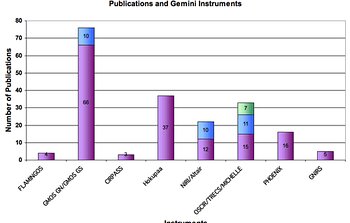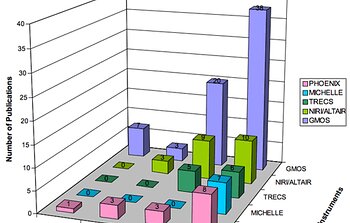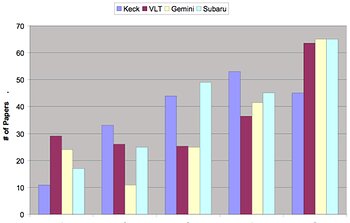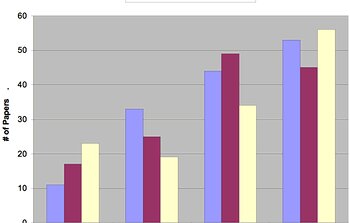The 200th Gemini Paper
January 4, 2006
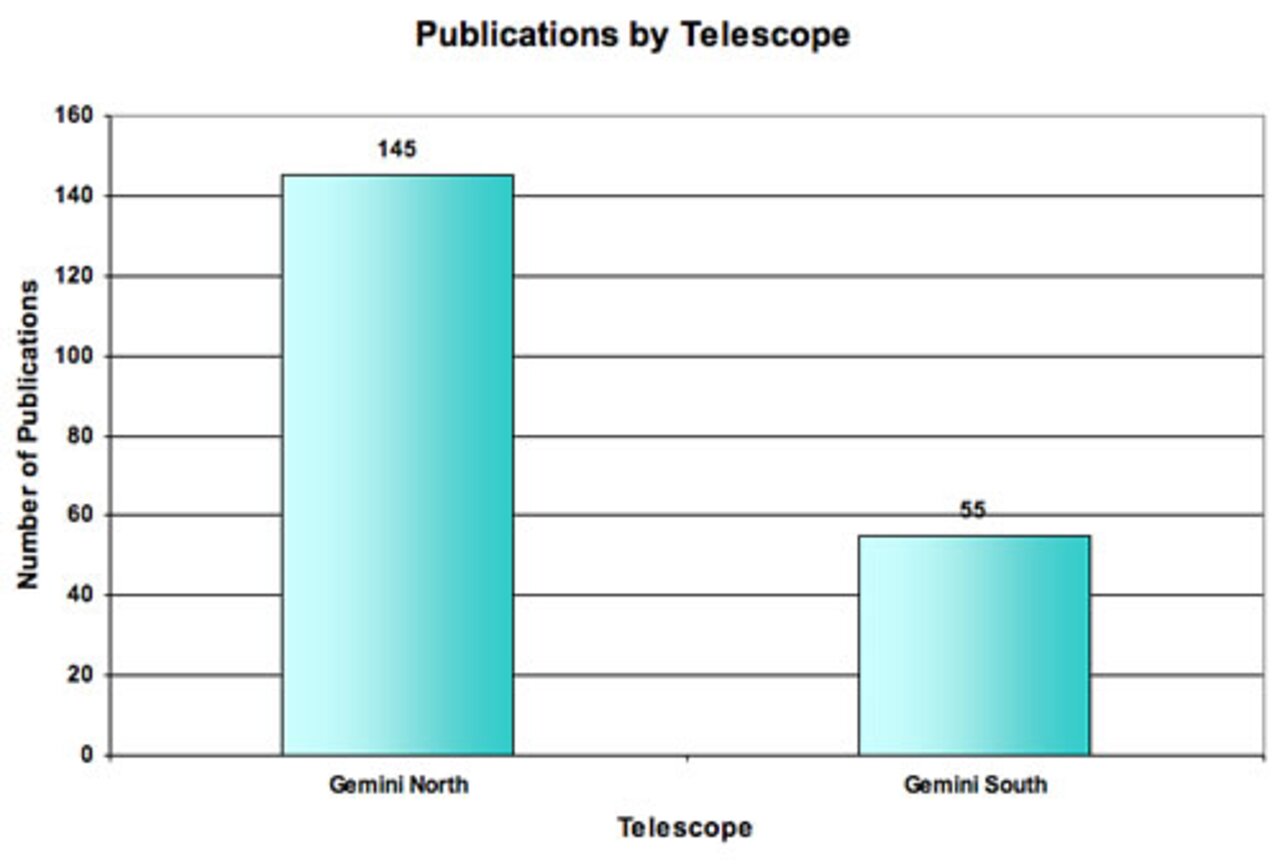
There are many milestones an astronomical observatory passes as it progresses through its scientific evolution. As the 2006 calendar year begins, Gemini Observatory has reached one of these important milestones: the publication of the 200th paper based on Gemini data.
The paper which marks this event is titled “The luminosity function of the fossil group RX J1552.2+2013” by Claudia L. Mendes de Oliveira, Eduardo. S. Cypriano, & Laerte Sodré, Jr., The Astronomical Journal, 131, 158-167, 2006 January. For more details on the paper see the summary here.
Of course this particular paper, like any of the 199 before it, only provides a glimpse at the diversity of research performed during Gemini’s early years. A scan of our publications archive reveals a range of research and discoveries that will continue to expand and diversify, creating a significant legacy for generations of scientists and members of the public. Many of these findings also have been reported on the Gemini website, and an archive is available here.
The process of tracking and monitoring the scientific output of an observatory is not trivial. There are many factors that must be addressed, and standard practices followed, that make a comparison with other astronomical research facilities possible and informative. As indicated by the quality, depth, and breadth of subjects covered in these first 200 papers, it is obvious that Gemini has “arrived.” The observatory is realizing the ambitious goals set in motion by those who established its vision in the early 1990s, and it has engaged many individuals from around the world since then.
The current (December 2005) issue of GeminiFocus, the newsletter of the Gemini Observatory includes an in-depth article on the growth and impact of Gemini-based publications.
| Instruments | # of papers | Hours per paper |
| “Old instruments” | ||
| Hokupa’a-36 (Adaptive optics imager) | 37 | 21 |
| OSCIR (mid infrared imager) | 15 | 23 |
| GMOS-North (optical MO/IFU spectrograph) | 66 | 37 |
| NIRI/ALTAIR (near IR imager/spectrograph) | 22 | 44 |
| PHOENIX (near IR spectrograph) | 16 | 63 |
| “Young” instruments | ||
| GNIRS (near IR spectrograph) | 5 | 22 |
| MICHELLE (mid IR imager/spectrograph) | 7 | 24 |
| T-ReCS (mid IR imager/spectrograph) | 11 | 28 |
| GMOS-South (optical MO/IFU spectrograph) | 10 | 82 |
Table 1. Number of papers and “productivity index” (number of charged hours from 2000B to 2004B divided by number of papers up to December 31, 2005) for the main Gemini instruments. A low number of hours means a high productivity index.

